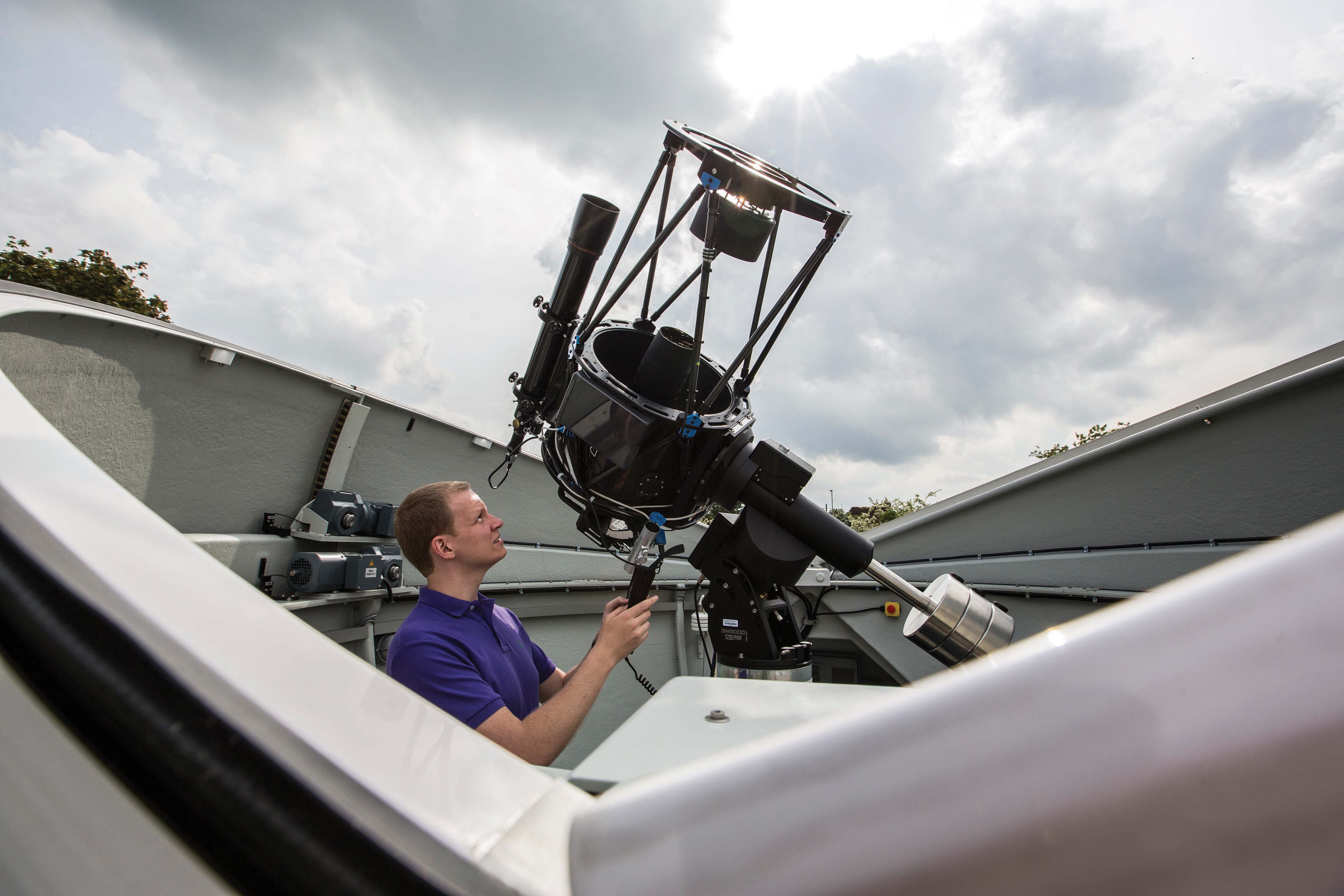The CAPS group provides the teaching for all of the Astrophysics and Planetary Science courses offered as part of the Physics and Astrophysics and Astronomy, Space Science and Astrophysics degree streams.
Centre for astrophysics and planetary science
Featured story

Below we outline these specific modules:
| Taught Modules | Credits |
|---|---|
|
PH304
This module provides an introduction to astronomy, beginning with our own solar system and extending to objects at the limits of the universe. Straightforward mathematics is used to develop a geometrical optics model for imaging with lenses and mirrors, and this is then used to explore the principles of astronomical telescopes. View full module details |
15 |
|
PH507
This module builds on the brief introduction to astronomy previously taught in earlier stages. Students enhance their knowledge of astrophysics through the study of the theory, formalism and fundamental principles developing a rigorous grounding in observational, computational and theoretical aspects of astrophysics. In particular they study topics such as properties of galaxies and stars and the detection of planets outside the solar system. View full module details |
15 |
|
PH508
This module aims to provide a basic understanding of the major subsystems of a spacecraft system and the frameworks for understanding spacecraft trajectory and orbits, including interplanetary orbits, launch phase and altitude control. Students will also gain an awareness of ideas on how space is a business/commercial opportunity and some of the management tools required in business. View full module details |
15 |
|
PH607
Aims: To provide, in combination with PH507, a balanced and rigorous course in Astrophysics for B.Sc. Physics with Astrophysics students, while forming a basis of the more extensive M.Phys modules. |
15 |
|
PH608
Aims: |
15 |
|
PH709
Space Astronomy: |
15 |
|
PH711
Flight Operations: Control of spacecraft from the ground, including aspects of telecommunications theory. |
15 |
|
PH712
Interstellar Medium: |
15 |
Specialist Lab Module
| Credits | |
|---|---|
|
PH531
This module introduces and develops a knowledge of numerical approximations to solve problems in physics, building on the programming skills gained in earlier stages. In addition, it complements the analytical methods students are trained to use and extends the range of tools that they can use in later stages of the degree. This module covers for example how to solve linear equations, how to find eigenvalues and numerical integration and differentiation. View full module details |
15 |
MPhys Reseach Project
| This is a 20 week project working with real data to develop the research skills required for industry and postgraduate study | Credits |
|---|---|
|
PH700
Aims: |
60 |